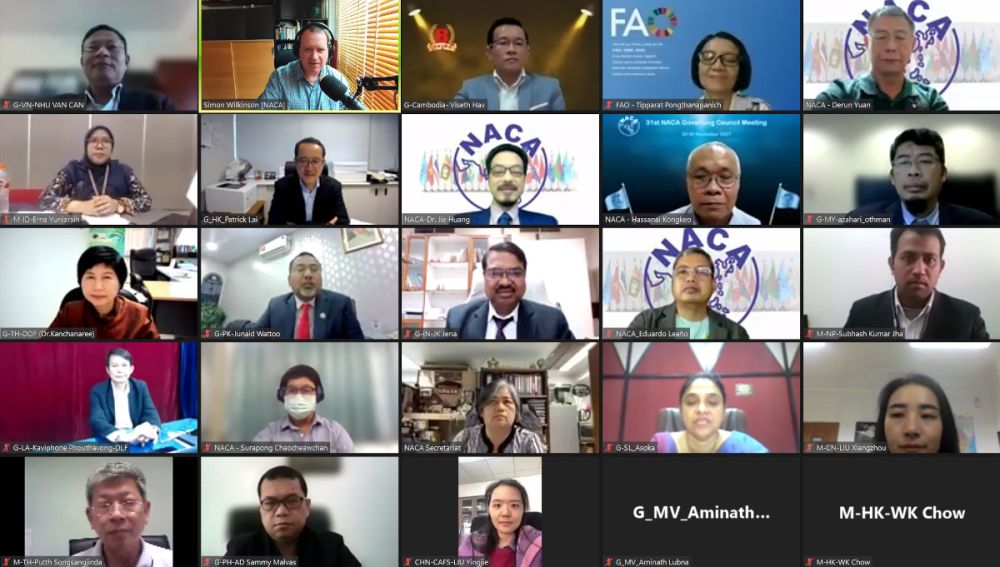31st NACA Governing Council held online
15 December 2021 | 2101 views | Network of Aquaculture Centres in Asia-Pacific

The 31st Governing Council Meeting (GCM) of NACA was held from 29-30 November via video conference. The meeting was attended by 44 participants including the representatives of 16 member governments, the Regional Lead Centres for China, India, Iran and Thailand, the Food and Agriculture Organization of the United Nations (FAO), the Asia-Pacific Association of Agricultural Research Institutions (APAARI), the Network of Aquaculture Centres in Central and Eastern Europe (NACEE), the Pacific Community (SPC), the Bangladesh Shrimp and Fish Foundation (BSFF) and the Centre for Integrated Rural Development for Asia and the Pacific (CIRDAP). Hong Kong SAR was selected as Chair of the 31st Council and Thailand the Vice chair.
The main agenda item for the meeting was consideration of the new NACA Strategic Plan 2021-2024. The plan is a reworking and expansion of NACA’s programmes to reflect the current operating environment, which has changed significantly in the advent of the pandemic, under the theme “Networking Regional Resources for Sustainable Aquaculture”. The new programme structure is as follows:
- Productivity and Sustainability.
- Health and Biosecurity.
- Genetics and Biodiversity.
- Safety and Quality.
- Emerging Regional and Global Issues.
- Education and Training.
- Information and Networking.
- Strategy and Governance.
- One Community.
Implementation of the programmes will be via formation of subnetworks of experts or communities of practice, to share experience, resources, and opportunities, develop and take part in collaborative projects. The approach will initially be piloted on a few priority programmes and scaled up as resources permit.
The new strategic plan emphasises the use of virtual networking, with the majority of NACA workshops and events to be held online. This will continue the practice that has been proven over the past two years, as the pandemic has driven widespread adoption of virtual networking and normalised online collaboration. NACA’s experience has been that a virtual event attracts from five to ten times as many participants, due to removal of travel and cost constraints, compared to an equivalent physical meeting and at a fraction of the cost. Video conferencing also eases the recording of presentations, which can then be shared via YouTube and similar platforms, further increasing reach of technical content.
Of the issues raised by members, common issues included a renewed interest in the expansion of mariculture including in deep sea sites, the integration of “internet of things” technologies and automation in aquaculture systems, aquatic animal health and biosecurity and climate change impacts and mitigation.
The GCM considered a briefing on the outcomes of the Global Conference on Aquaculture Millennium +20, which had been the flagship event for 2021. FAO thanked the government of China for hosting the conference, which had been attended by 1,728 people from 113 countries, of which 1,228 attended virtually. Preparations for the conference included the development of a series of regional reviews on the status of aquaculture development and a series of thematic review papers, which were prepared by teams of expert authors commissioned by FAO and opened for public comment.
The main output of the conference, the Shanghai Declaration, was unanimously adopted by the participants and over 40 organisations had provided written statements of support, which are available on the conference website (https://aquaculture2020.org). It was noted that the Shanghai Declaration was a participant’s declaration, outlined by an invited group of experts, informed by regional and thematic reviews and with input from many stakeholders of diverse interests.
The new strategic plan will be published on the NACA website in due course.
Creative Commons Attribution.